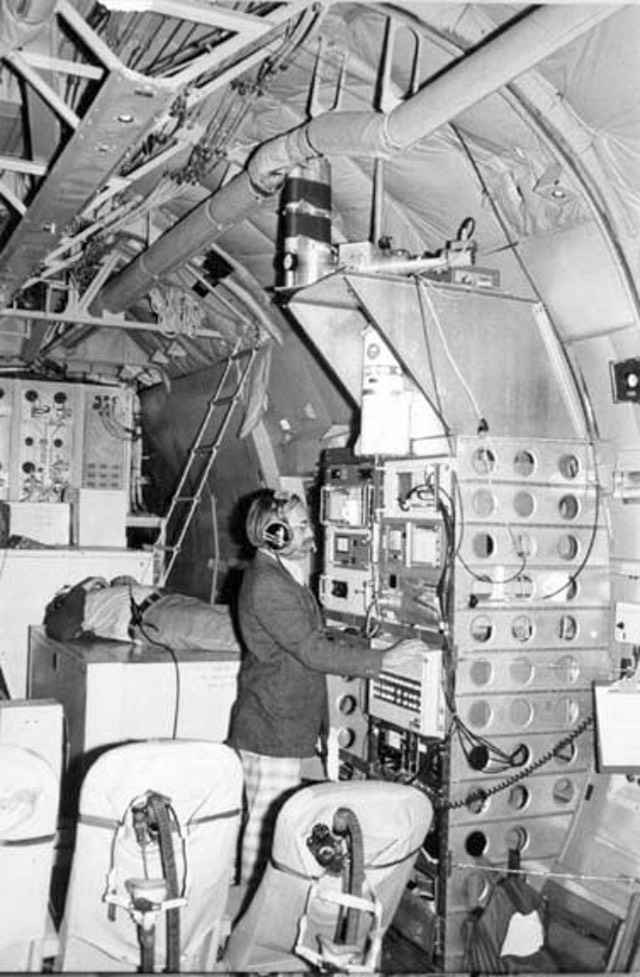
Dr. Ira Nolt at the controls of his experiment in the back of the airplane. The purpose of this device was to measure the water vapor present in the atmosphere above the telescope for calibration purposes. Our flight was at 41,000 feet, but there is still some water vapor present that could affect readings from the telescope.
The instrument is similar to the Michelson–Morley experiment in that it allowed the IR emissions coming in from the atmosphere to be split and travel two paths. A stepper motor and mirror on one of the paths (upper right on top of rack stack) would allow a change in path distance and allow the two beams to interfere. Path distance produces a delta time phase change signal between the paths and when you apply a FFT transform you get the spectrum. By looking at the relative difference between water spectral peaks and various gas spectral peaks you can tell how much water is present.
The computer was operated by pressing buttons on the front console. The program was loaded from paper tape. I hand built the computer interface above the computer and updated the software.
Contrary to what they tell you at the NASA KAO www site, the air compressor was the best place to sleep. It kept you nice and warm and provided a vibrating massage to boot. Jim Radostitz worked all day setting everything up so it was time for a snooze.
Detector reference:
"Portable 3He Detector Cryostat for the Far Infrared", J. V. Radostitz, I. G. Nolt, P. Kittel and R. J. Donnelly. Rev. Sci. Instr. 49: 86-88 (1978).
Fourier transform spectroscopy: http://en.wikipedia.org/wiki/Fourier_transform_spectroscopy